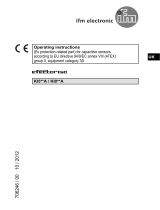2 TZIDC DIGITAL POSITIONER | OI/TZIDC-EN REV. B
Table of contents
Change from one to tw o columns
1 Safety .......................................................................... 3
General information and instructions .................................. 3
Warnings .................................................................................... 3
Intended use ............................................................................. 4
Improper use ............................................................................. 4
Notes on data safety ............................................................... 4
Warranty provisions ................................................................. 4
Manufacturer’s address .......................................................... 4
2 Use in potentially explosive atmospheres ............. 5
General requirements .............................................................. 5
Commissioning, Installation .................................................. 5
Notes for operation ................................................................. 5
Use, operation .......................................................................... 5
Maintenance, repair ................................................................. 6
Product identification ............................................................. 7
Marking (name plate) ......................................................... 7
Preconditions for safe operation of the positioner .......... 7
Cable gland ........................................................................... 7
ATEX / EAC TR-CU-012 ............................................................ 8
ATEX Ex i ............................................................................... 8
IECEx Ex i.................................................................................... 9
FM / CSA .................................................................................. 10
CSA International .............................................................. 10
CSA Certification Record ................................................. 11
Electric data ....................................................................... 11
FM Approvals...................................................................... 11
3 Design and function ................................................ 12
Schematic diagram ................................................................ 12
Principle of operation ............................................................ 12
4 Product identification ............................................ 13
Name plate .............................................................................. 13
5 Transport and storage ............................................ 14
Inspection ................................................................................ 14
Transporting the device ........................................................ 14
Storing the device .................................................................. 14
Ambient conditions .......................................................... 14
Returning devices ................................................................... 14
6 Installation ............................................................... 15
Safety instructions ................................................................. 15
External position sensors ..................................................... 15
Mechanical mounting ............................................................ 16
General ................................................................................ 16
Mounting on linear actuators.......................................... 17
Mounting on rotary actuator .......................................... 20
Electrical connections ........................................................... 21
Positioner / TZIDC Control Unit Electrical Connection
.............................................................................................. 22
TZIDC Remote Sensor Electrical Connection ............... 23
Electrical data for inputs and outputs .......................... 23
Connection on the device ................................................ 25
Connection on device - TZIDC Control Unit with TZIDC
Remote Sensor .................................................................. 27
Connection on device - TZIDC Control Unit for remote
position sensor ................................................................. 28
Pneumatic connections ........................................................ 29
Information on double acting actuators with spring-
return mechanism ............................................................. 29
Connection on the device ................................................ 29
Air supply ............................................................................ 30
7 Commissioning ....................................................... 30
Operating modes .................................................................... 31
Standard automatic adjustment ......................................... 31
Standard automatic adjustment for linear actuators*
............................................................................................... 31
Standard automatic adjustment for rotary actuators*
............................................................................................... 31
Sample parameters ............................................................... 32
Setting the mechanical position indication ................. 32
Setting the mechanical limit switch with proximity
switches .............................................................................. 33
Setting the mechanical limit switch with 24 V
microswitches ................................................................... 33
8 Operation ................................................................. 34
Safety instructions ................................................................ 34
Parameterization of the device ........................................... 34
Menu navigation ............................................................... 34
Menu levels .............................................................................. 35
HART® Parameter Overview ................................................. 36
Parameter description HART® ............................................. 37
9 Diagnosis / error messages .................................. 40
Error codes .............................................................................. 40
Alarm codes ............................................................................ 42
Message codes ....................................................................... 43
10 Maintenance ............................................................ 44
11 Repair ....................................................................... 44
Returning devices .................................................................. 44
12 Recycling and disposal ........................................... 44
13 Additional documents ............................................ 44
14 Appendix .................................................................. 45
Return form ............................................................................. 45
FM installation drawing No. 901064 .................................. 46




















